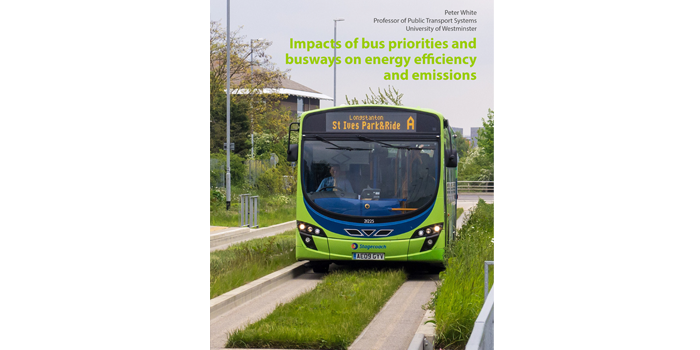September 10 2015
The energy efficiency of buses on scheduled local services can be analysed in two respects:
- Vehicular energy consumption, typically in diesel fuel, usually expressed as kilometres per litre[1] (or its inverse, litres per 100 kilometres). CO2 emissions may be regarded as roughly inversely proportional to kpl (i.e. as kpl worsens, CO2 emissions increase).
- Energy consumption per passenger-kilometre, which is also dependent on average load carried.
Vehicle energy consumption in turn is affected by:
- Rolling resistance at a given speed
- Energy used each time the vehicle accelerates to running speed, proportional to mass of the vehicle multiplied by square of speed.
- Engine idling, etc. at stops
The mass of the vehicle thus becomes an important factor, and in this respect buses typically produce a lower figure than for rail vehicles, approximately 125 kg per passenger space[2], compared with about 250 kg for rail. As stop spacing becomes closer, the energy used in repeated acceleration from stops tends to become predominant rather than that due to rolling resistance. The component due to engine idling also increases. Estimates about thirty years ago by a German manufacturer suggested that for a standard-size single-decker, energy use rose from about 30 litres per 100 km (3.3 kpl) at one stop per kilometre run, to 60 litres per 100 km (1.7 kpl) with four stops per kilometre[3]. Such stops will be of all types, i.e. fixed stops at which passengers board or alight, pedestrian crossings, junctions, and the ‘stop-start’ pattern associated with congested traffic flows.
[1] In some cases, use is still made of miles per gallon (mpg). This indicator may be converted to kpl by applying a factor of 0.3611.
[2] For example, the ADL Enviro 400 MMC with 93 passenger spaces and unladen weight of 11,435 kg (Coach & Bus Week 3 March 2015. p18), i.e. 123 kg/pax space; and a somewhat lower figure for the Optare MetroDecker prototype with 99 passenger spaces and unladen weight of 9,800 kg (Bus and Coach Professional, 10 Oct 2014, p12), i.e. 99 kg per space
[3] Motor Transport 27 October 1982
